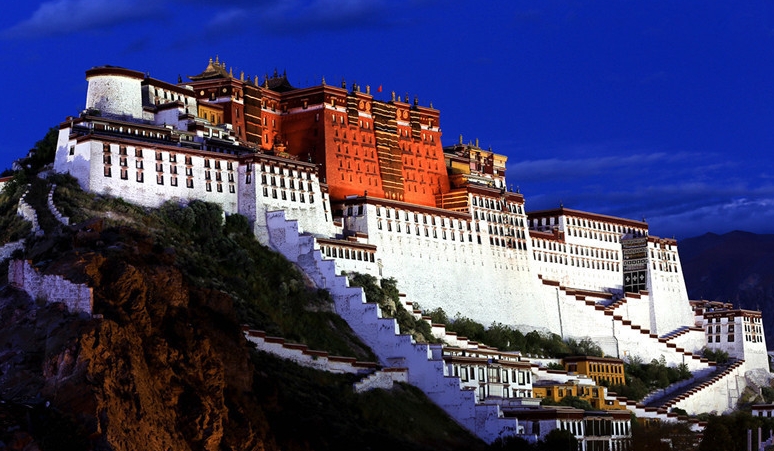
This guide provides a comprehensive introduction to the travel essentials of Lhasa (拉萨), Gyangtse (江孜), and Shigatse (日喀则), covering geographical location, cultural history, ethnic customs, weather, best travel times, recommended attractions, food, shopping, transportation, and accommodation. From the sacred sites of Tibetan Buddhism to stunning natural landscapes, and from local delicacies to traditional handicrafts, it aims to create an unforgettable journey for you in Tibet.
I. Geographical Location
- Lhasa (拉萨): Located in central Tibet Autonomous Region (西藏自治区), China, at an altitude of about 3650 meters, Lhasa (拉萨) is the political, economic, cultural, and transportation center of Tibet (西藏).
- Gyangtse (江孜): Situated about 230 kilometers southwest of Lhasa (拉萨), at an altitude of about 4000 meters, Gyangtse (江孜) is an important town in southern Tibet (西藏).
- Shigatse (日喀则): Located about 280 kilometers west of Lhasa (拉萨), at an altitude of about 3800 meters, Shigatse (日喀则) is the second-largest city in Tibet (西藏) and is close to Mount Everest (珠穆朗玛峰).
II. Cultural History
Lhasa (拉萨)
- History: Lhasa (拉萨) has a long history. After Songtsen Gampo (松赞干布) moved the capital to Lhasa (拉萨) in the 7th century, it gradually became the political, religious, and cultural center of Tibet (西藏).
- Culture: Lhasa (拉萨) is the center of Tibetan Buddhism (藏传佛教), with the Potala Palace (布达拉宫) and Jokhang Temple (大昭寺) as its cultural symbols.
- Ethnicity: The population is mainly Tibetan (藏族), with other ethnic groups such as Han (汉族) and Hui (回族) also residing here.
Gyangtse (江孜)
- History: Gyangtse (江孜) is an important military stronghold in southern Tibet (西藏) and has historically repelled foreign invasions. The famous “Gyangtse Defense Battle (江孜保卫战)” took place here.
- Culture: Palcho Monastery (帕克索寺) is the cultural symbol of Gyangtse (江孜), known for its exquisite murals and stupas.
- Ethnicity: The population is mainly Tibetan (藏族), preserving rich Tibetan cultural traditions and customs.
Shigatse (日喀则)
- History: Shigatse (日喀则) has a long history and is the political, religious, and cultural center of the Tsang region (后藏地区). Tashilhunpo Monastery (扎什伦布寺) is the seat of the Panchen Lama (班禅喇嘛).
- Culture: Shigatse (日喀则) is an important center of the Gelug sect (格鲁派) of Tibetan Buddhism (藏传佛教) and is also a significant producer of traditional Tibetan handicrafts (传统手工艺品).
- Ethnicity: The population is mainly Tibetan (藏族), with a strong cultural atmosphere.
III. Ethnic Customs
- Religious Beliefs: Tibetan Buddhism (藏传佛教) is the main religion. Common religious activities include spinning prayer wheels, pilgrimages, and prostrations.
- Etiquette: It is customary to exchange khata (哈达, a ceremonial scarf) as a sign of respect and blessing.
- Dietary Customs: The main foods include tsampa (糌粑, roasted barley flour), butter tea (酥油茶), barley wine (青稞酒), yak meat (牦牛肉), and Tibetan noodles (藏面).
- Clothing: Tibetan attire (藏族服饰) is colorful and diverse. Thick Tibetan robes are worn in winter, while lighter woolen robes are worn in summer.
IV. Weather
- Lhasa (拉萨): It has a plateau monsoon climate, with cool summers and cold winters. The annual average temperature is about 7℃, with summer temperatures ranging from 15℃ to 25℃ and winter temperatures from -5℃ to 5℃.
- Gyangtse (江孜): The climate is similar to Lhasa (拉萨) but with higher altitude and slightly lower temperatures.
- Shigatse (日喀则): The climate is cold, with long winters and short, cool summers. Summer temperatures range from 10℃ to 20℃, and winter temperatures from -10℃ to 0℃.
V. Best Travel Times
- Spring (March-May): The weather gradually warms up, suitable for travel, but be mindful of altitude sickness.
- Summer (June-August): The climate is pleasant, making it the best season for travel, though it is also peak tourist season with larger crowds.
- Autumn (September-November): The weather is cool, and the scenery is spectacular, making it an ideal time to view mountains and lakes.
- Winter (December-February): The weather is cold, but it offers unique winter plateau landscapes, perfect for photography enthusiasts.
VI. Recommended Attractions
Lhasa (拉萨)
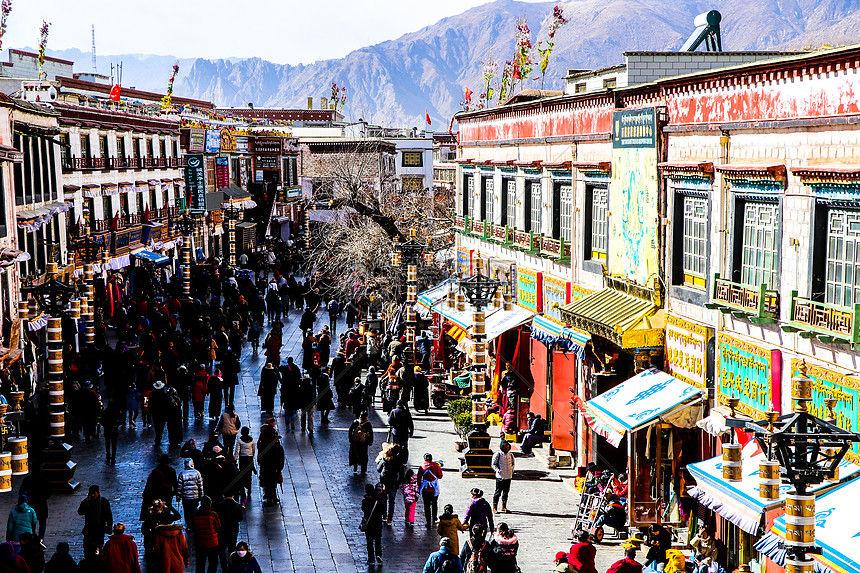
- Potala Palace (布达拉宫): A UNESCO World Heritage Site and the winter residence of the Dalai Lama (达赖喇嘛).
- Jokhang Temple (大昭寺): One of the most sacred temples in Tibetan Buddhism (藏传佛教).
- Barkhor Street (八廓街): The most famous commercial street in Lhasa (拉萨), where you can experience Tibetan culture.
- Norbulingka (罗布林卡): The summer palace of the Dalai Lama (达赖喇嘛), with beautiful garden landscapes.
- Drepung Monastery (哲蚌寺): One of the six major monasteries of the Gelug sect (格鲁派) of Tibetan Buddhism (藏传佛教).
Gyangtse (江孜)
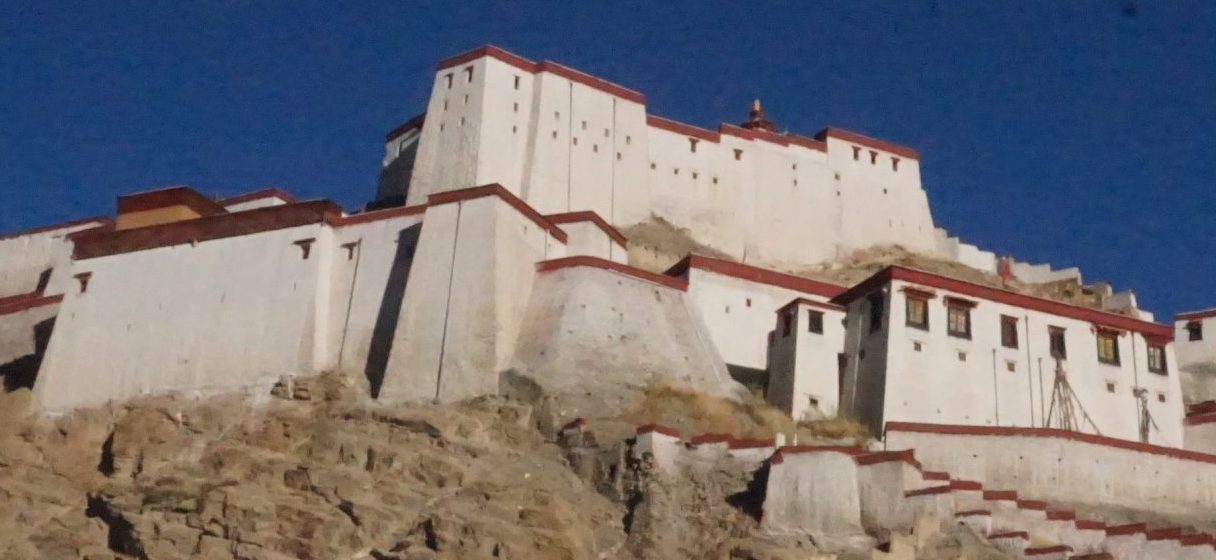
- Palcho Monastery (帕克索寺): Known for its exquisite murals and stupas.
- Gyangtse Dzong (江孜宗堡): A fortress built on a hill, which is a symbol of Gyangtse (江孜).
- Karakoram Glacier (卡若拉冰川): A stunning natural wonder along the way.
Shigatse (日喀则)
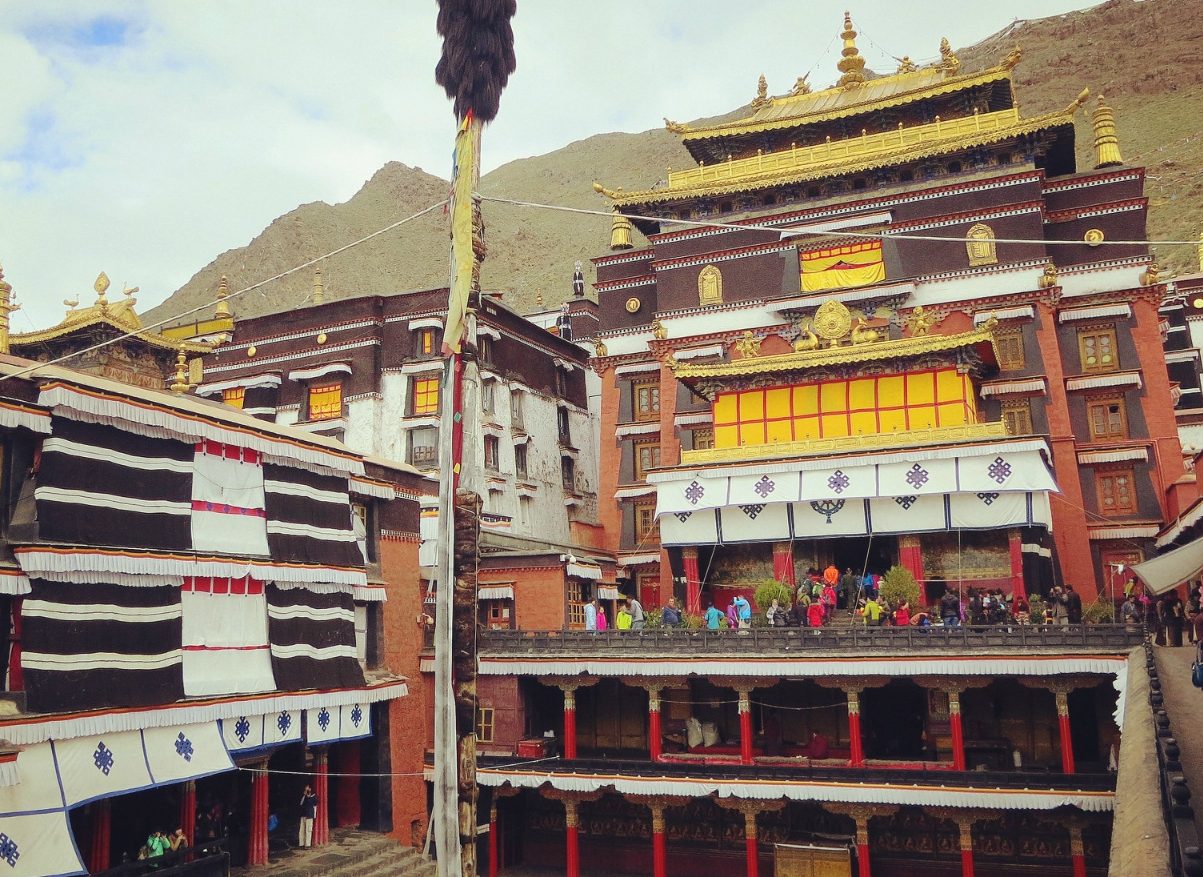
- Tashilhunpo Monastery (扎什伦布寺): The seat of the Panchen Lama (班禅喇嘛), with numerous Buddha statues and stupas.
- Mount Everest (珠穆朗玛峰): The world’s highest peak, accessible from the Everest Base Camp (珠峰大本营).
- Yamdrok Lake (羊卓雍措湖): One of the three sacred lakes in Tibet (西藏), with azure waters and stunning scenery.
VII. Food
Lhasa (拉萨)
- Tsampa (糌粑): The staple food of Tibetans, made from roasted barley flour.
- Butter Tea (酥油茶): A characteristic Tibetan drink with a rich flavor.
- Barley Wine (青稞酒): A traditional Tibetan beverage with low alcohol content.
- Yak Meat (牦牛肉): Tender and nutritious.
- Tibetan Noodles (藏面): Similar to noodles but with a chewier texture.
Gyangtse (江孜)
- Dried Yak Meat (风干牦牛肉): A unique local delicacy with a distinctive flavor.
- Cheese (奶酪): Rich and creamy, a traditional Tibetan dairy product.
- Tibetan Hot Pot (藏式火锅): Made with yak meat and various vegetables, delicious in taste.
Shigatse (日喀则)
- Tashilhunpo Monastery Vegetarian Food (扎什伦布寺素斋): Light and refreshing vegetarian meals offered by the monastery.
- Tsampa Pancakes (糌粑饼): Pancakes made from tsampa, crispy on the outside and soft on the inside.
- Tibetan Yogurt (藏式酸奶): Rich in flavor, a local specialty.
VIII. Shopping
Lhasa (拉萨)
- Barkhor Street (八廓街): Offers Tibetan handicrafts, thangkas (唐卡, Tibetan Buddhist scroll paintings), Tibetan knives (藏刀), prayer beads (佛珠), and more.
- Near Sera Monastery (色拉寺附近): Many Tibetan specialty shops selling religious items and handicrafts.
Gyangtse (江孜)
- Near Palcho Monastery (帕克索寺附近): Traditional Tibetan handicrafts and souvenirs can be purchased.
- Local Market (当地市场): Features dried yak meat, cheese, and other local specialties.
Shigatse (日喀则)
- Near Tashilhunpo Monastery (扎什伦布寺附近): Many shops selling Tibetan handicrafts and religious items.
- Shigatse Market (日喀则市场): Offers traditional Tibetan clothing and local specialties.
IX. Transportation
Getting to Lhasa (拉萨)
- By Air: Lhasa Gonggar International Airport (拉萨贡嘎国际机场) is the largest airport in Tibet (西藏), with flights connecting to major cities in China.
- By Train: The Qinghai-Tibet Railway (青藏铁路) connects Lhasa (拉萨) with several cities in mainland China.
- By Long-Distance Bus: Buses are available from cities such as Chengdu (成都), Kunming (昆明), and Golmud (格尔木).
Lhasa (拉萨) to Gyangtse (江孜)
- By Car: The distance is about 230 kilometers, taking 3-4 hours by car.
- By Long-Distance Bus: Buses depart from Lhasa Bus Station (拉萨汽车站), taking about 4 hours.
Gyangtse (江孜) to Shigatse (日喀则)
- By Car: The distance is about 100 kilometers, taking 1-2 hours by car.
- By Long-Distance Bus: Buses depart from Gyangtse (江孜), taking about 2 hours.
Shigatse (日喀则) to Lhasa (拉萨)
- By Car: The distance is about 280 kilometers, taking 4-5 hours by car.
- By Long-Distance Bus: Buses depart from Shigatse Bus Station (日喀则汽车站), taking about 5 hours.
X. Accommodation
Lhasa (拉萨)
- Luxury Hotels: Such as St. Regis Lhasa Resort (拉萨瑞吉酒店), InterContinental Lhasa Hotel (拉萨洲际酒店).
- Mid-Range Hotels: Such as Lhasa Shangri-La Hotel (拉萨香格里拉酒店), Lhasa Tianhai International Hotel (拉萨天海国际大酒店).
- Economy Hotels: Such as Home Inn Lhasa (拉萨如家酒店), HanTing Hotel Lhasa (拉萨汉庭酒店).
- Guesthouses: Many characteristic guesthouses are available near Barkhor Street (八廓街) at affordable prices.
Gyangtse (江孜)
- Hotels: Several hotels are available in Gyangtse County (江孜县), such as Gyangtse Hotel (江孜宾馆).
- Guesthouses: Staying with local Tibetan families is an option to experience Tibetan life.
Shigatse (日喀则)
- Luxury Hotels: Such as Shigatse Mount Everest Hotel (日喀则珠峰大酒店).
- Mid-Range Hotels: Such as Shigatse Yarlung Hotel (日喀则雅江大酒店).
- Economy Hotels: Such as Home Inn Shigatse (日喀则如家酒店).
- Guesthouses: Many guesthouses are available near Tashilhunpo Monastery (扎什伦布寺) at affordable prices.
XI. Tips
- Altitude Sickness: Rest well upon arrival at high-altitude areas, avoid strenuous activities, drink plenty of water, and prepare some anti-altitude sickness medicine.
- Cultural Respect: Respect local religious beliefs and customs. Follow the regulations when entering temples.
- Sun Protection and Warm Clothing: The plateau has strong ultraviolet rays, so sun protection is necessary. The temperature difference between day and night is large, so bring enough warm clothes.
- Travel Planning: Plan your itinerary in advance and arrange travel time reasonably to avoid fatigue from long journeys.
- Travel Permit: A Tibet Travel Permit (西藏旅游许可证) is required to enter Tibet (西藏), and some attractions need to be booked in advance.
We hope this introduction helps you understand some specific information about the area. If you would like to arrange an itinerary, you can refer to our 24 Days China Speed Train Tour.

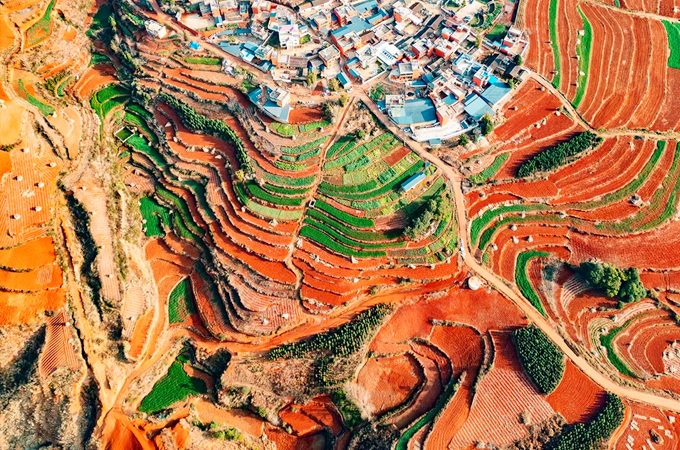
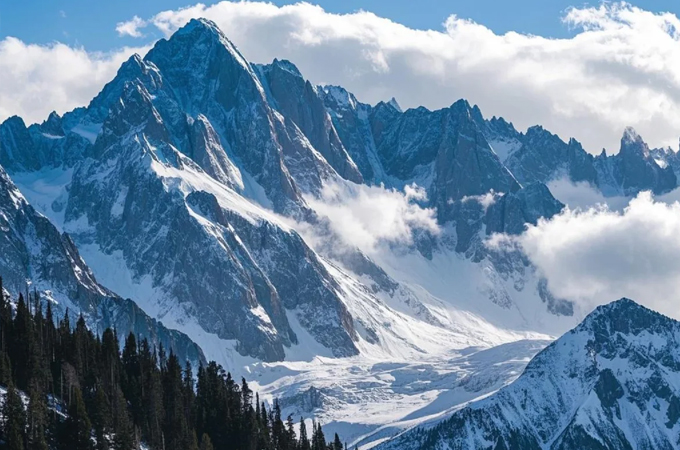
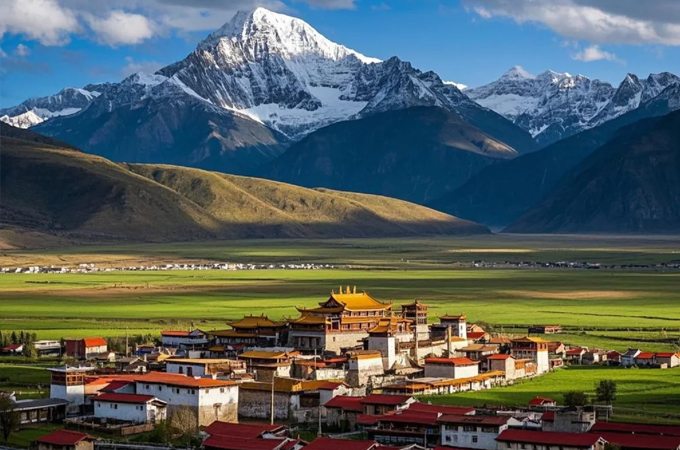
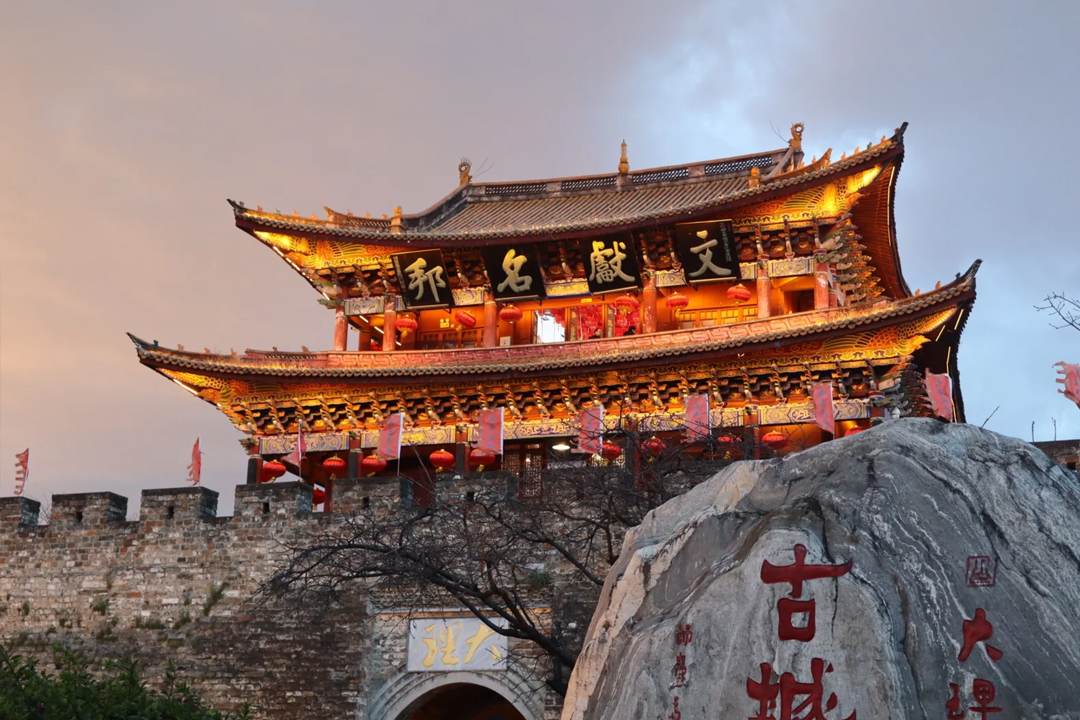
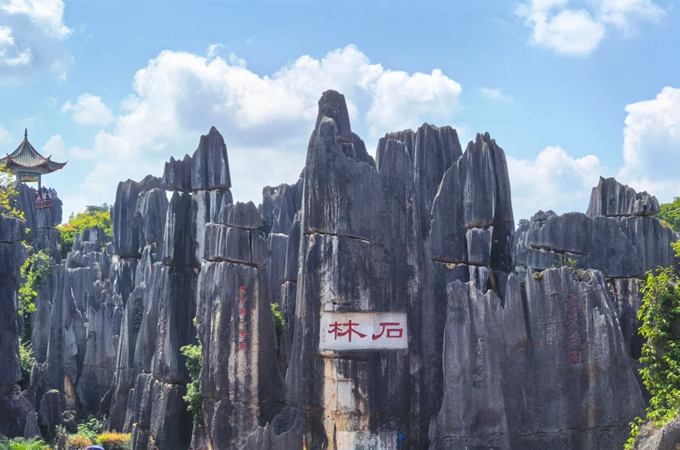

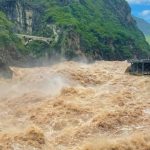
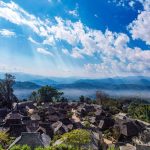
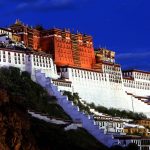


Leave a comment: